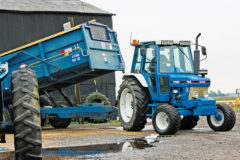Dennis built cars as well as trucks!
Posted by Chris Graham on 21st December 2022
Did you know that as well as commercial vehicles, Dennis built more than 2,000 cars? Zack Stiling tells the fascinating story.
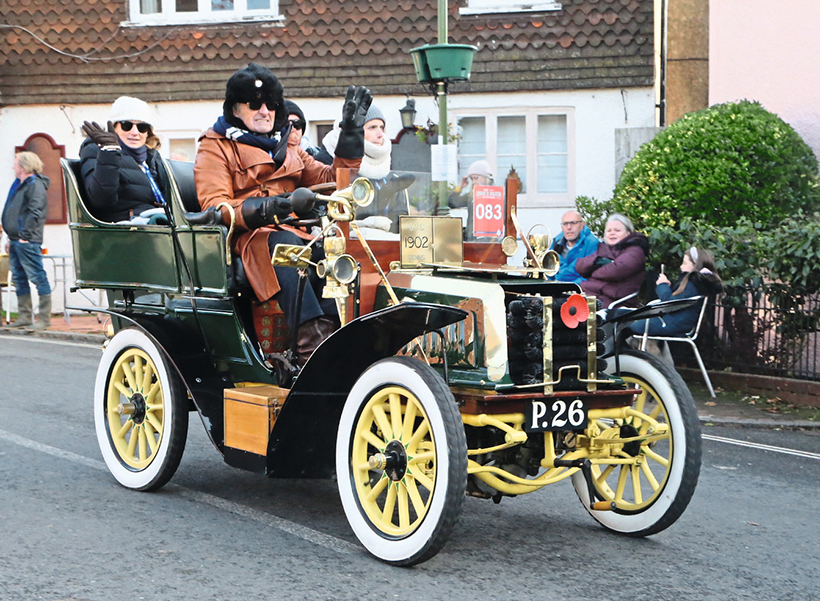
The RAC London to Brighton Run will not be the same without John Dennis and this famous Dennis car as seen by the editor in 2021. (Pic: Peter Love)
Few events cultivate quite so many loyal adherents as the London to Brighton Veteran Car Run. Having grown up in Croydon, I was first taken to see it when I was four years old. I’ve watched from the side of the road every year since, and there are people now in their 80s who can make the same boast.
As far as cars and drivers go, though, are there any more loyal or enthusiastic than John Dennis, the man behind the wheel of the unique 1902 Dennis 8hp tonneau? Last November saw the car tackle its 70th Brighton Run, and its 62nd with John at the helm, which may very well be a record.
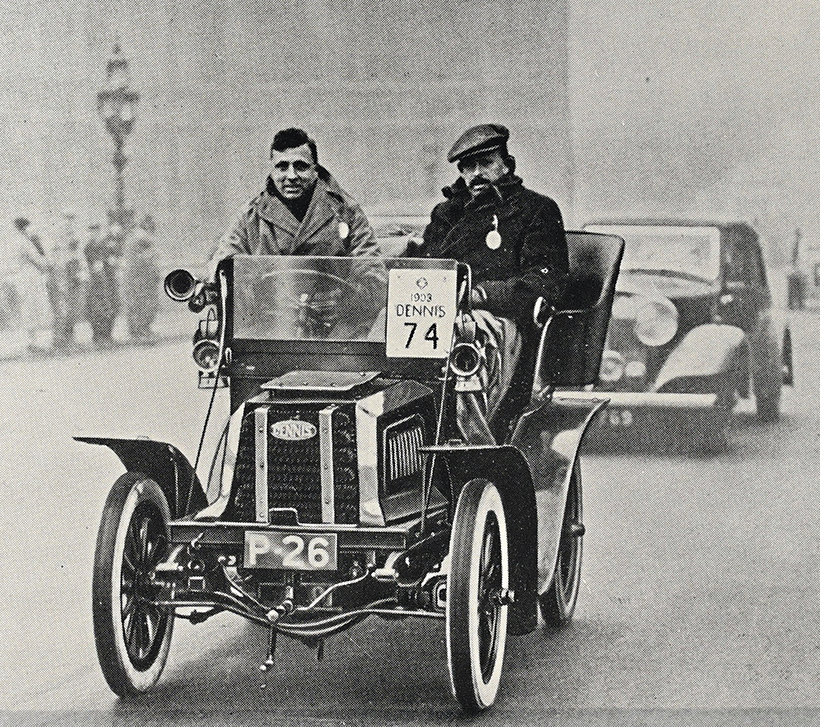
The earliest photograph of the Dennis, published in The Motor, shows the car crossing Westminster Bridge on the 1936 London to Brighton Run.
Some readers will be familiar with early Dennis commercial vehicles, but relatively few will know that the first years of the company were spent constructing bicycles, tricycles, quadricycles and cars. Like many motor businesses, John Dennis (grandfather to the present Mr Dennis) began by setting up a cycle shop in January 1895, situated at 94 High Street, Guildford. He and brother Raymond turned their attention in 1898 to experiments with motor tricycles, which went into production with De Dion Bouton engines, and were subsequently joined by quadricycles.
The market appeal for such rudimentary machines was short-lived, though, and Dennis built its first proper car in 1901. Spurious claims made by the company in 1910 that the Dennis brothers had, in fact, designed and built a car as early as 1895 can be safely dismissed.
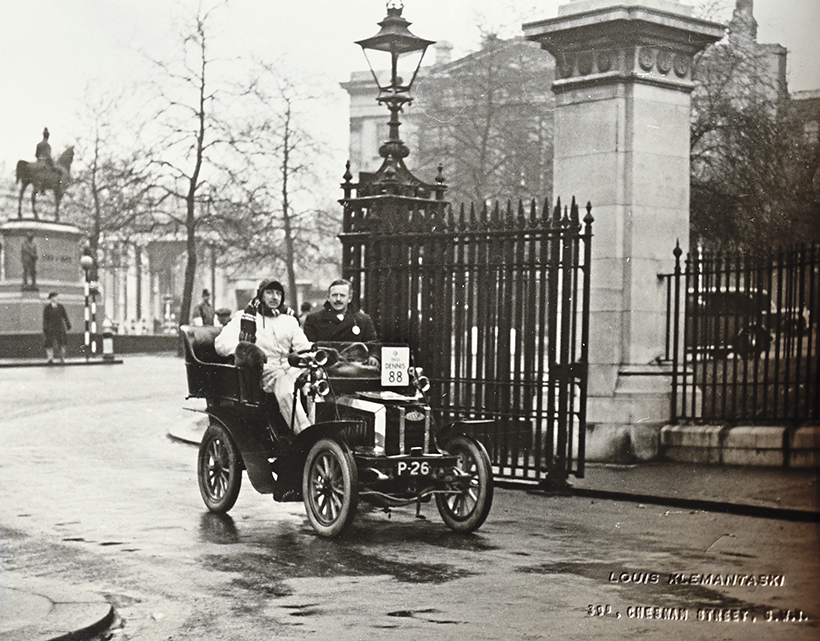
Klementaski’s shot of the Dennis passing Apsley House.
Sold as either a two- or four-seater, these early cars maintained Dennis’s connection with De Dion, all using the tried-and-tested 6hp or 8hp single-cylinder unit which was then so popular as a proprietary engine. Significantly for this story, Dennis tested its new model in the hill-climb at Tilburstow Hill, in Godstone, from which it emerged as Champion of the Meeting. These early cars, though marketed as Dennis, were actually Lacoste et Battmann rolling chassis to which Dennis did little besides affix a body. The company didn’t start making its own chassis until around 1905.
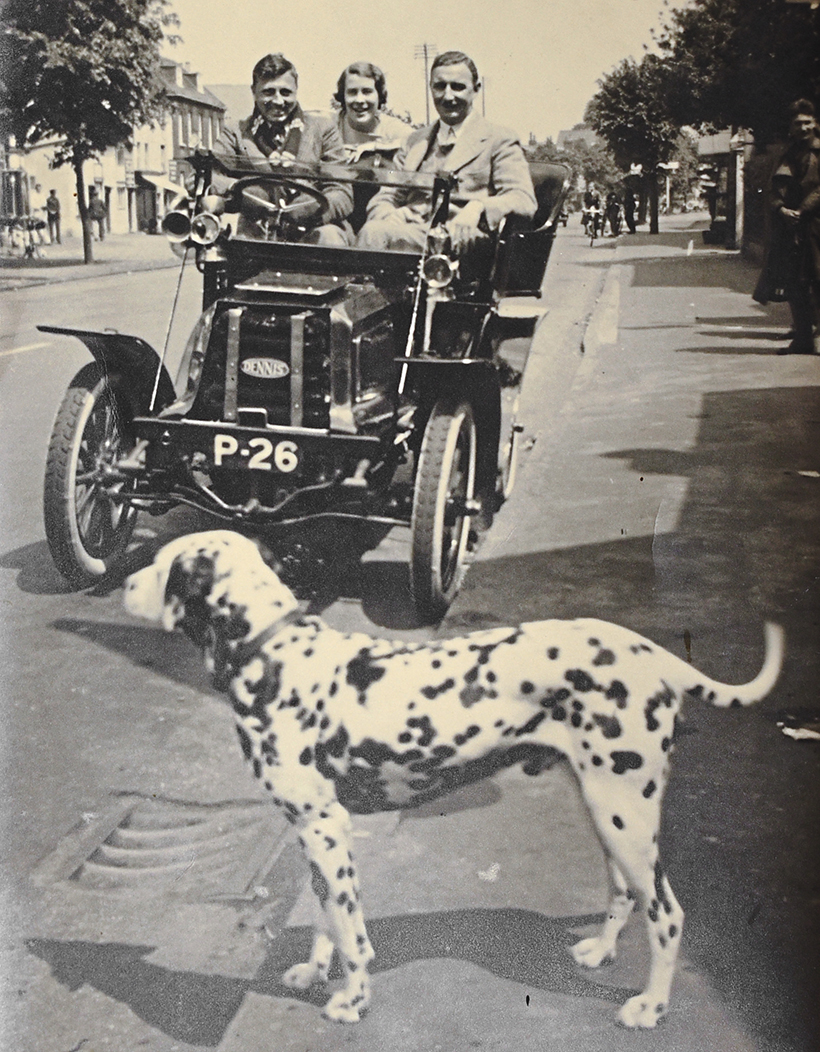
Roy Dennis and friends pose with the car and a distracted Dalmatian.
By this point, Dennis had outgrown its High Street premises, so moved first to the old barracks on Guildford’s North Street in 1898, then to a brand-new building on the banks of the picturesque River Wey, in 1901. This was hugely important, it being Britain’s first purpose-built motor-car factory, and happily it still survives, albeit now as a Wetherspoon’s hostelry.
The successful completion of a non-stop, 60-mile London-Oxford trial in 1902 generated further good publicity, and some 200 Dennis cars were sold that year. By 1903, the range had grown most impressively, with the option of 12/14hp and Aster-engined 16/20hp models luxuriously bodied as broughams or hansoms. However, Dennis never looked back after building its first fire appliance in 1908. Production of cars continued until the outbreak of war, after which Dennis products remained strictly commercial.
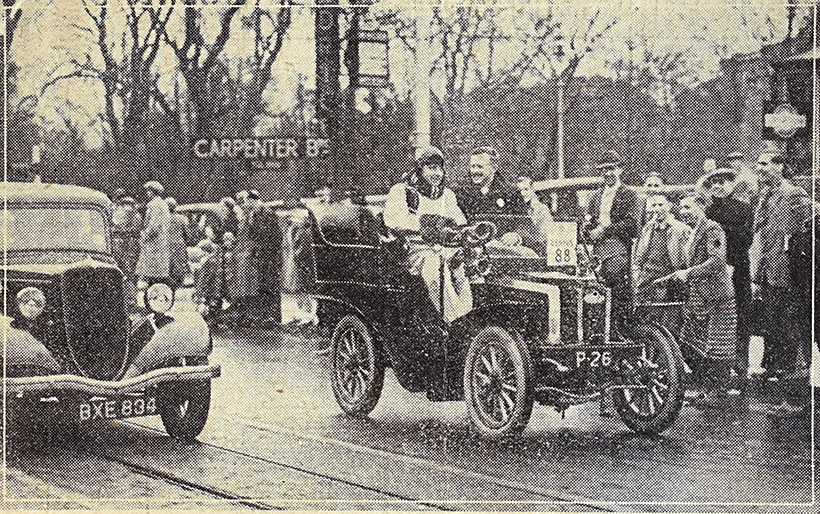
Again on the 1938 Brighton Run, Practical Motorist photographed it in a more rural setting.
John Dennis estimates that the total production of Dennis cars would have been somewhere between 2,000 and 3,000, but today only three survive, all owned by him. There’s a 1901 tricycle, the 1902 tonneau featured here, and a tourer from 1909, as well as a 1915 limousine, although that would originally have carried a light commercial body. Of them all, it’s the 1902 car which is far and away the most historic, as it has been owned by either the Dennis company or the family virtually from new.

The Dennis participates in a local Surrey rally, sometime around 1937.
Having been originally sold to a Mr Hallan of Surrey, it was returned to the factory after only two years in part-exchange for a younger model. Dennis retained it for spares and, for that purpose, it sat sadly in a corner of the workshop for many years, parts slowly being removed from the engine and chassis to sustain other cars. While it may be supposed that its technology was pretty redundant by the 1920s, records indicate that the last spare part was removed from it and sold in 1929. It languished there for several more years, forlornly gathering dust until Royston ‘Roy’ Dennis – son of the original John Dennis, father to the present one and assistant managing director of the company – decided it merited saving.
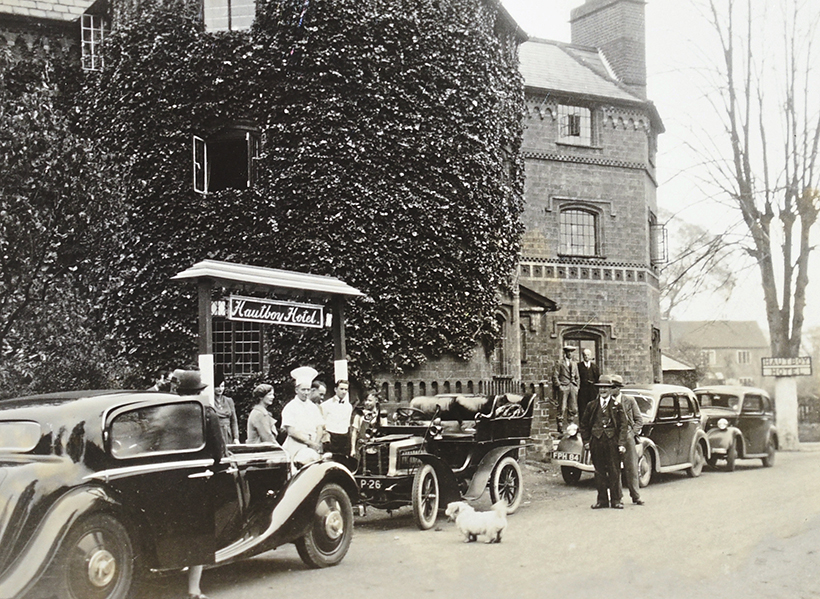
The Dennis is seen on a local trip to the Hautboy Hotel, in Ockham, with an elegant SS Jaguar and two Fords.
He assumed ownership in the early 1930s, and toiled for some years to rebuild it. But, since the engine and gearbox were among those parts which had been removed, he struggled to make any great progress. That was until 1935, when he fortuitously received correspondence from the Bexhill Motor Company, which was seeking confirmation of the identity of a car which it believed to be a Dennis. This other Dennis, a c1902 two-seater, had been running until 1934, and AH Oxenford of the Bexhill Motor Company had bought it with the intention of entering it in the ‘old crocks race’, but he agreed to sell it to Dennis for the sum of £25.
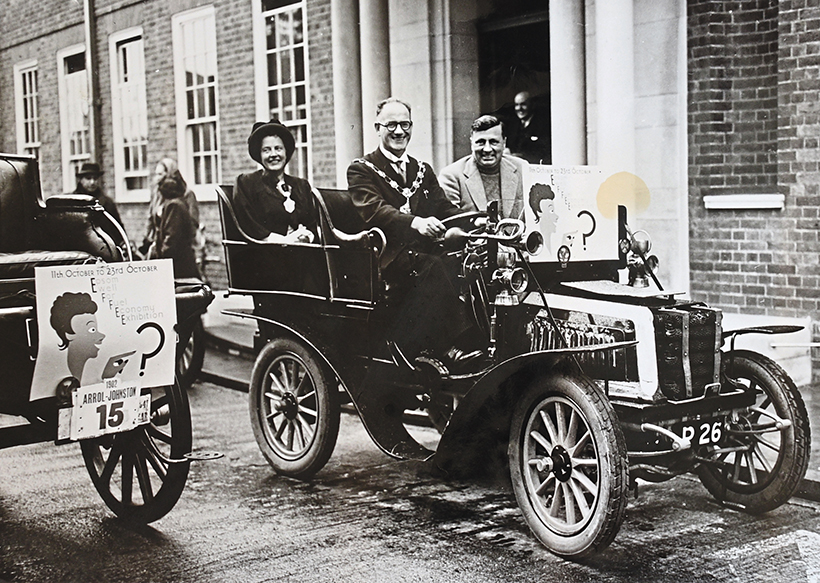
This unusual photograph shows the Dennis with a 1902 Arrol-Johnston with the Mayor of Epsom & Ewell during the Epsom & Ewell For Fuel Economy Exhibition.
It would be a digression to delve too much into this other car’s past but it, too, had an interesting life. It had belonged to the clergyman of Brookwood Cemetery near Woking, before it was sold again through the Orleans Garage of Kingston-on-Thames to a Mrs Jones, of Hastings. However, she only had previous experience of a Model T Ford, and wasn’t altogether competent at the controls of an early veteran. Attempting to drive it home that night, she started it in gear and ran it into a ditch. Over 18 months later, it became the subject of a court case against the Orleans Garage, when Mrs Jones attempted to claim damages and also alleged deceit because, she professed, the car wasn’t even a Dennis! That latter claim was easily disproven.
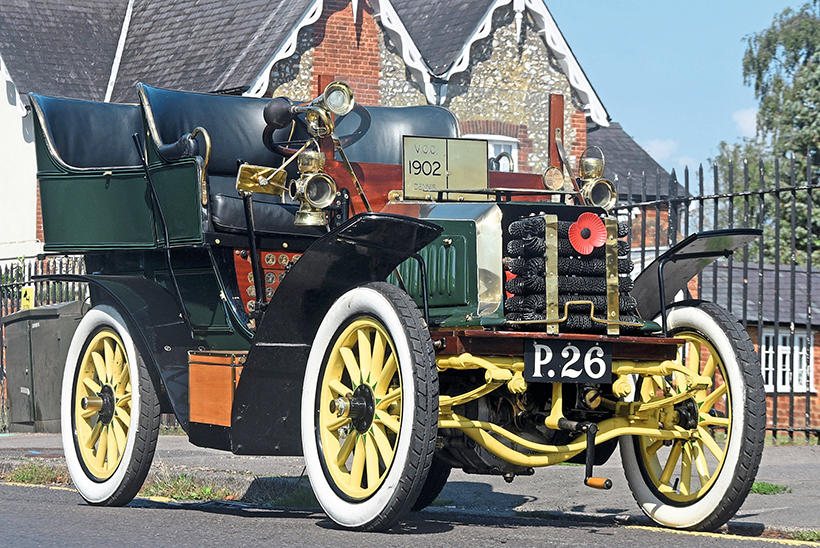
The Dennis looks most handsome in its 1930s colour scheme.
Sadly, this car, DY 1544, would never see Brighton, but it laid down its life for the restoration of P 26, donating all the parts which were required to get it up and running again. DY 1544 had itself lost its original engine at some stage, so the restored Dennis didn’t quite match the original factory specification, but the important thing is that it was on the road again.
Having purchased DY 1544 in November 1935, Roy Dennis was able to get P 26 ready in time for the 1936 Brighton Run, which he duly entered, along with the 1937 and 1938 runs. It naturally attracted some interest as a newcomer, and was photographed by The Motor, Practical Motorist and famous motor-racing photographer, Louis Klementaski. He took part in a number of other Veteran Car Club rallies around Surrey including, notably, the Tilburstow Hill Climb where the brand-new Dennis car had been put through its paces back in 1901.
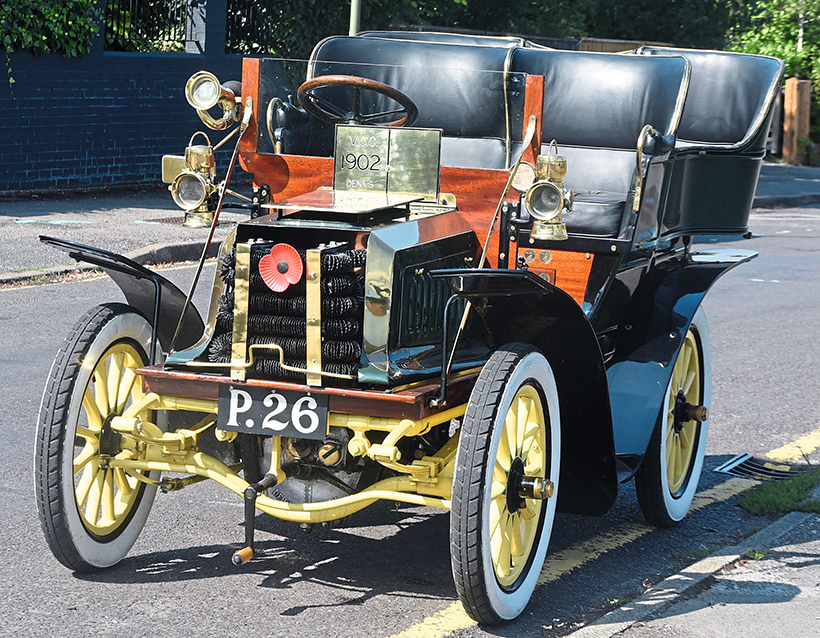
This car has been a familiar sight on London to Brighton Runs since 1936.
After the war, Roy Dennis entered a further five Brighton Runs between 1946 and 1954, before his interest in the old-car hobby waned. Fortunately, as his involvement declined, the young John was growing ever more enthusiastic and, as soon as he passed his driving test in 1959, he was eager to get behind the wheel of his ancestral car. His father seems to have been relieved to have someone who would take it off his hands, and he effectively gifted it to John, who jumped at the chance to enter the 1959 run, and has only missed the event once – when he was away in America – since.
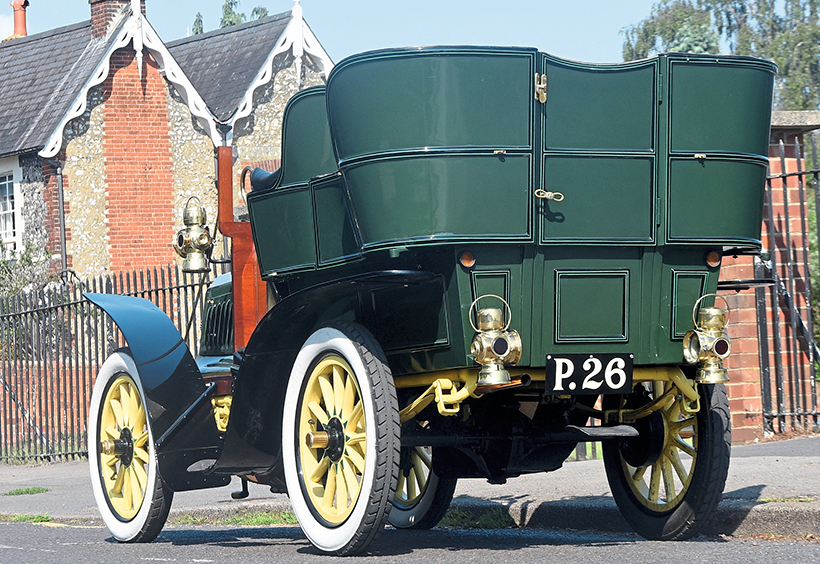
Though it uses a Lacoste et Battman chassis, the tonneau body was Dennis’s own handiwork.
Today, the little car has been kept looking just as it did when Roy Dennis restored it 87 years ago, all the way down to the pretty Buckingham Green and primrose colour scheme, and the distinctive hand-painted whitewalls, although it has obviously been refreshed from time to time. The engine which came from the Bexhill car was of 6hp, and has been replaced by John with an 8hp unit, but other modifications made by Roy Dennis remain. When restoring it, he fitted a Lucas magneto to replace the missing trembler coil ignition, and also a modified Zenith carburettor. In recent years, John has embraced the convenience of an electric starter but, otherwise, the vehicle remains unchanged.
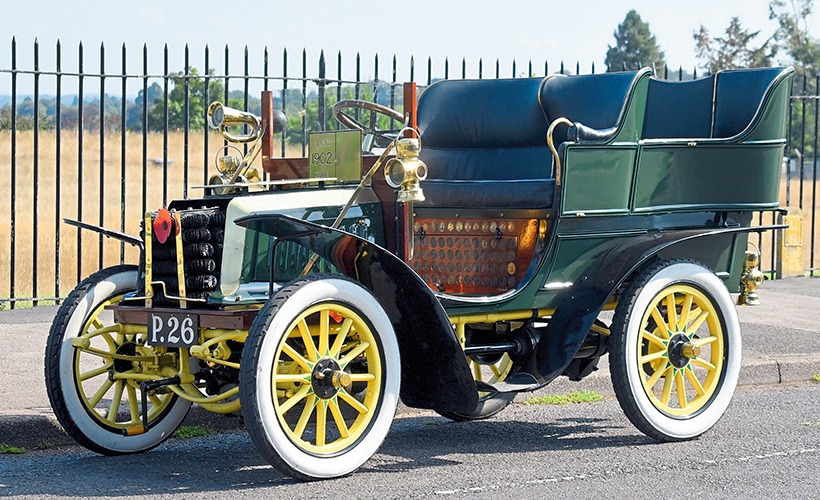
John Dennis has kept his car in the very best condition.
We fire the Dennis up and venture onto the road, although we can’t go too far as John lives in a hilly area and, despite the car’s apparent hill-climbing success in 1901, the diplomatic thing might be to say today that opinions of its hill-climbing ability may vary.
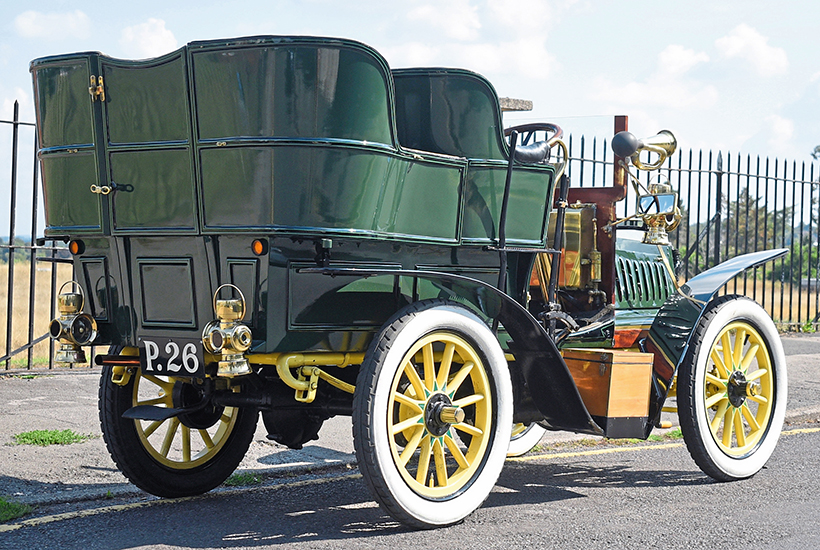
The high-sided body gives the car an imposing appearance, although it’s actually one of the smaller veterans.
Roy Dennis recorded in 1936 that, ‘It behaves extremely well on the road, obtaining a maximum speed of 22mph but, unfortunately, the hill-climbing abilities, owing to a high bottom gear ratio, are not too good.’ John, on the other hand, has a little more faith. “It’s probably not as quick as a lot of 8hp De Dion Bouton-engined cars, although it’s probably a better hill-climber than they are, but not at speed.”
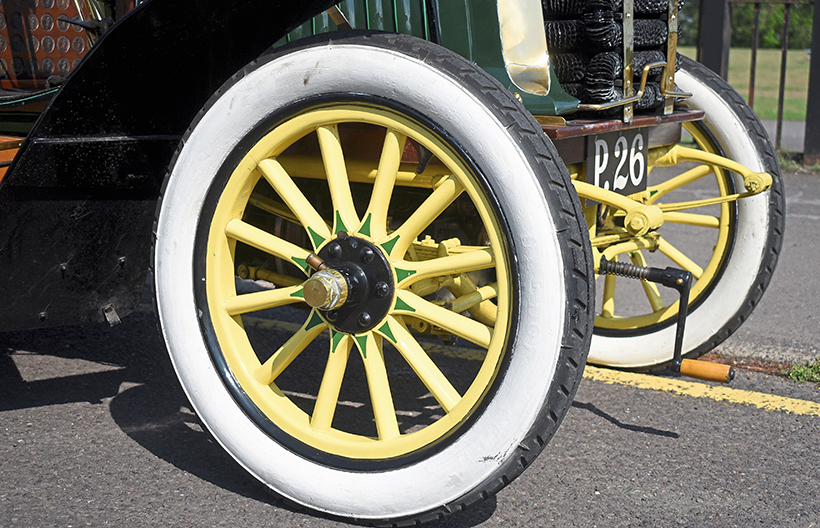
The pretty, hand-painted whitewalls make the Dennis instantly recognisable.
To drive, it’s all very much as one would expect a veteran to be. The single-cylinder engine transfers its power to a gearbox with three forward speeds and a reverse, selected through an ordinary quadrant change. A Cardan shaft carries it to the rear axle, with both gearbox and rear axle being Lacoste et Battmann units.

The controls are simple, with no instruments to distract the driver.
John continues, “The steering’s very direct, with three-quarters of a turn from lock to lock, which is conventional for a car of the age. It’s got no chassis reinforcement so you always feel guilty when you change up and it shudders considerably. The subframe is the only thing that gives it stiffness.”
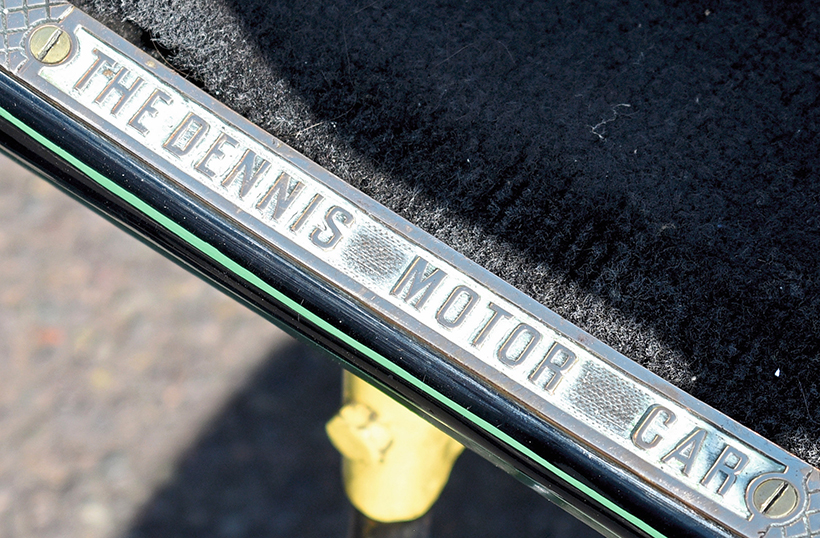
The Dennis Motor Car originated in Guildford, and was constructed in Britain’s first purpose-built car factory.
The engine is too low-revving for double-declutching, so John just has to time his gear changes carefully. He comments that the gears are as good as you can hope for with a crash ’box, while the brakes are also typically veteran. “The footbrake’s not brilliant, I must admit. It acts on the transmission, and I’ve changed the original for a larger one. The handbrake’s better; you can actually lock the rear wheels.”
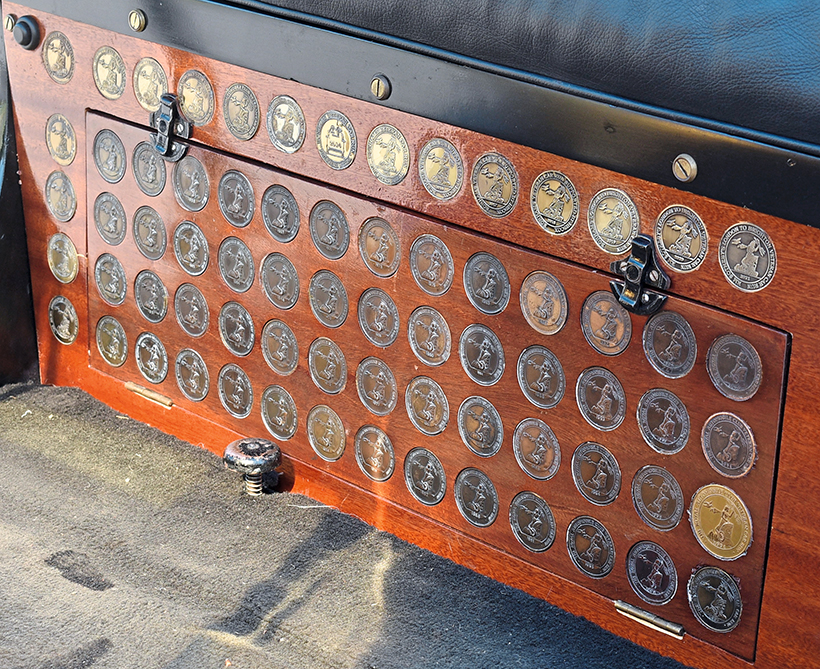
Seventy Brighton Run finisher’s medals is probably a record.
While he perhaps wouldn’t mind if his heirloom was a little more responsive in some respects, there’s one thing that can’t really be faulted, and that’s its reliability record. “Touch wood,” John smiles, “she’s been pretty reliable. We’ve broken down on the run occasionally, but our most serious problem was when the axle bearing collapsed. That was back in the days when garages were still quite traditional, and a friend went belting off to one and returned with the correct-sized ball bearings.”
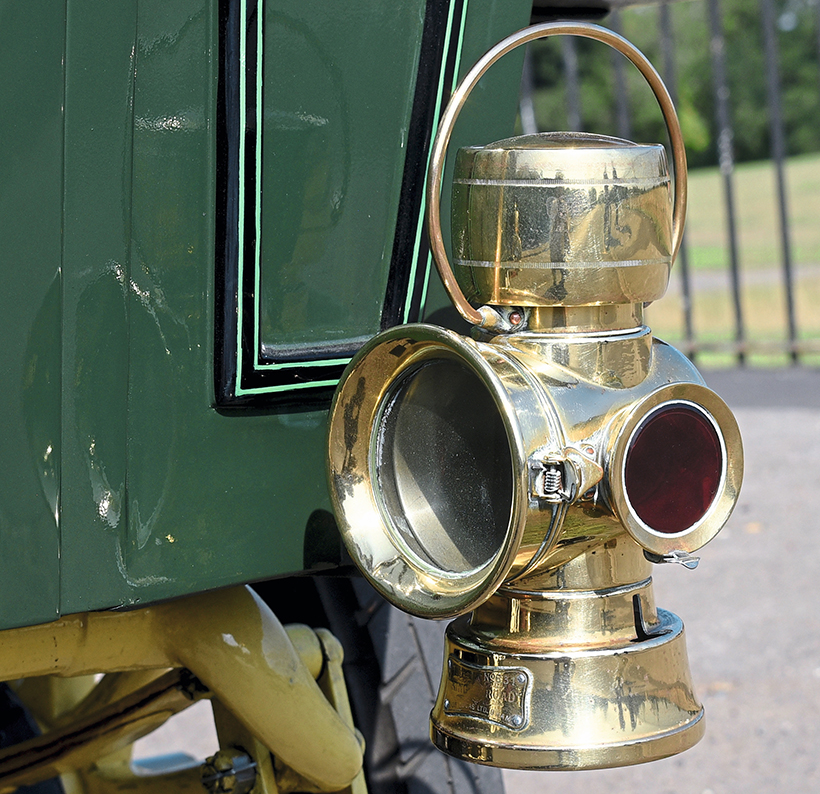
As with other veterans, gleaming brass is in no short supply on the Dennis.
Perhaps it’s because of the Dennis’s trustworthiness that it has been selected on a number of occasions to give rides to celebrities and VIPs, from World of Sport presenter Dickie Davies to Princess Anne and Prince Michael of Kent. No matter how famous its passengers may be, though, as a unique survivor with family history from new and a possibly unbeaten Brighton Run record, there’s nothing which can upstage the Dennis itself.
This feature comes from a recent issue of Old Glory, and you can get a money-saving subscription to this magazine simply by clicking HERE




